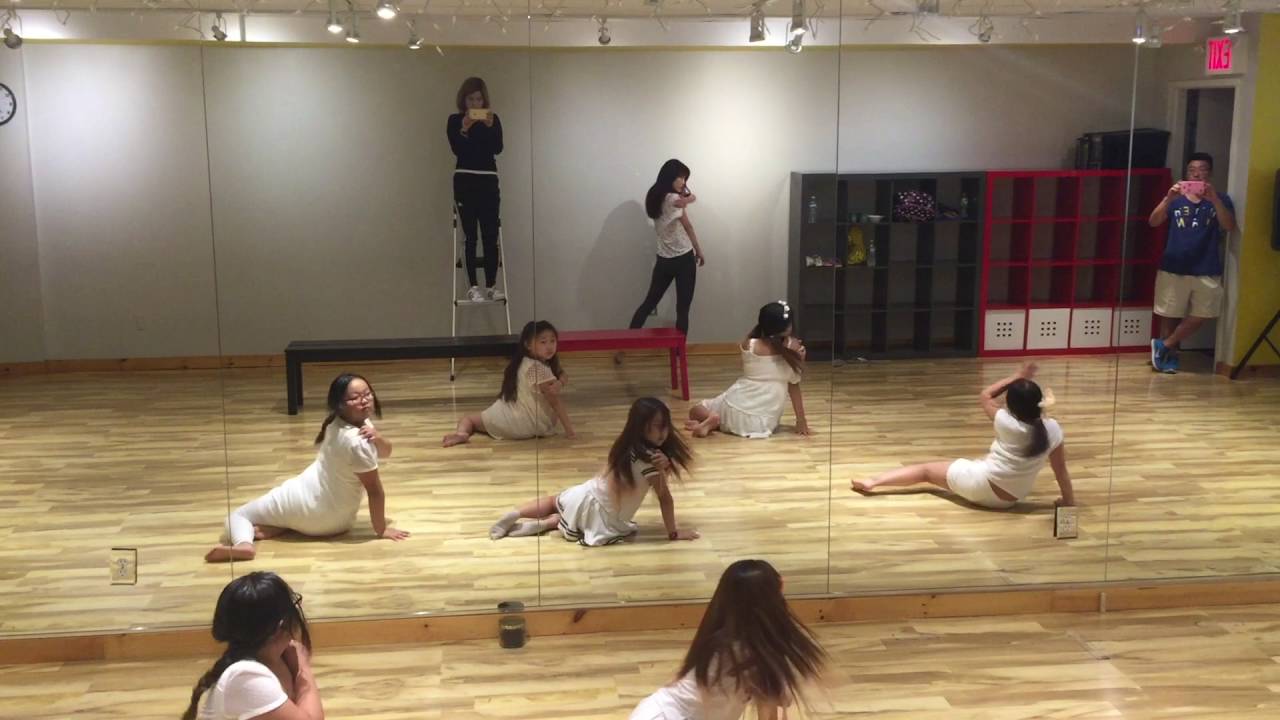Teaching children to dance is not just “dancing for fun” but this is a subject that helps children practice to develop physically and mentally. When should parents start teaching their children to dance? Or how to teach your baby to dance at home that is both effective and fun? If you are still wondering and have not found the answer yet, parents please read the following article to find the most accurate and complete answer!
The unexpected benefits of letting your baby learn to dance
Joyful and vibrant dances will bring a lot of benefits to your baby such as:
- Teaching your child to dance a lot helps them to correct their figure, better balance and increase their ability to concentrate.
- Learning to dance helps babies sleep better and more deeply, and at the same time helps them relax and reduce stress after tiring and stressful school hours.
- Teaching children to practice dancing or dancing will help them learn to be calm because the teacher will guide them on how to focus, persevere, endurance, discipline, so that they can stand firmly on their feet. mine.
- Teaching children to dance is to contribute to promoting the baby’s metabolism, helping blood to be pumped to the brain faster, thereby increasing the ability to learn, understand and remember.
- Children who are active through dance also help improve self-confidence, make children feel more proud of themselves, thereby more open to others.
- In modern life, teaching your baby to dance is the best way to keep them away from TV and electronic devices effectively.
- If the child is having weight problems such as being overweight or obese, it is necessary for parents immediately to find a dance that the child likes to stimulate the baby to exercise and burn excess fat.
- In dance classes for kids, every child has the opportunity to interact with classmates with similar interests and professional dance instructors , which is a good way to spark interest and help children meet and have fun and make more new friends.
- During the whole process of teaching children to dance, most teachers will divide into groups for the children to practice together. This indirectly helps children learn how to work effectively in groups.

Teaching children to dance helps to exercise physical fitness and reduce pressure after stressful school hours
In general, parents should let their children be physically trained as soon as possible. And, instead of forcing your child to learn heavy subjects, why not let him try a dance class so that he can both have fun and exercise at the same time?
When should I start teaching babies to dance?
Right from the time the child is about 2-3 years old, parents can start teaching the child to dance at home. In particular, parents should remember that it is never too early to let your baby listen to children’s music and feel the joy of dancing to funny children’s tunes. Therefore, if conditions and time are available, parents should create conditions for their children to practice dancing as soon as possible.
The ability to absorb and remember the dance also depends a lot on the natural talent of each baby. If parents realize that the more they learn, the more their child has a special interest in this art, then when the child is 3-5 years old, please register your child for an additional dance class. Teachers with expertise and well-trained skills will help children quickly get used to it as well as dance better and have more flexible movements.
Simple games to teach your baby to dance at home
Create your own funny music for your baby
Parents can create a playlist of children’s songs that children like to listen to and mix them up into a new song. If you don’t have time, parents can also search Google, YouTube, etc. to find available mashup songs for their children. Familiar songs but with new melodies will be an inspiration to help your baby more interested in learning to dance.
Fun Animal Kingdom game
This is a simple but extremely attractive game that parents can also play with their children, even children under 2 years old. Parents teach children to dance by imitating the sounds of animals around such as dogs barking “woof woof”, cats saying “meow”, …

The Gangnam Style “horse dance” that simulates a horse is loved and imitated by many children
Before starting this game, turn on funny animal-themed music and dance with your baby while saying the names of the corresponding animals. Pay attention to encourage your child to read the animal’s name while doing actions to describe the animal and its characteristic sound. This will definitely be an extremely useful activity because the child will learn to dance and have more knowledge about the animal kingdom.
Fairy game of Tiny Prince and Giants
This is a very useful way to teach your baby to dance to help them better understand sounds. To play this game, parents find 2 songs with 2 different melodies including one with a loud sound and a fast melody (giant), the other with a gentle and slow melody (tiny prince).
Then, parents can dance with the baby to the tune of each song. When playing the role of a giant, teach your child to dance decisively and appear “big”. On the contrary, when being a fairy, walk with your child with softer dances.
Name Calling Game
This is an extremely interesting activity that parents should not miss to promote their baby’s creativity and communication ability. With this game, parents should use songs with short, easy lyrics or teach children to dance by numbers. While the song is playing, ask your child to name the actions or feelings, objects, numbers, etc. in the song and teach them how to describe them through dance (for example, when happy, smile, when angry, stomp on the floor.)
How to make your child more interested in learning to dance?
In order for the child to always be excited, parents should pay attention not to force their child to study just because the parents like it. There are some cases where the child is happy at first but later becomes uninterested. At this point, parents should stop and find a more appropriate time to introduce dances to the baby.
When letting their children participate in dance classes, parents should also note a few points before taking their children to class:
- Inform your child about dance classes in advance: before taking your child to dance class, parents must notify him about what they are about to do. For example, ask your child if he likes to learn to dance, where you take him, who will be in the classroom, what he do in the class … to prepare your child’s spirit.
- Introduce your child to your child’s teacher: if possible, parents should take the child to have a view of dance class first before the course begins. This will help your child get to know the teacher as well as his class and friends.
- Confiding with the child after the class: after each dance lesson, parents should spend time talking with the child, asking the child about the experience in the class such as what child learned today, what your new friend name is, the baby’s favorite dance, the content of the upcoming lesson, etc. to understand your child better.
Suggest some suitable dances for beginners
Aerobic dance
Teaching children to dance Aerobic (also known as Gymnastics) is known as an entertaining sport that combines music and dance. Thanks to its comprehensive impact on physical, intellectual and mental well-being, experts encourage children to practice aerobics from an early age.

Aerobic is the art of forging dynamism and agility for children
When doing aerobics, children need a combination of motor ability, flexibility, memory ability and observation skills. During training with this subject, the children’s heart rate increases, the amount of oxygen supplied to the heart and lungs is also more, thereby regulating the breathing rate, pushing the organs in the body to increase metabolism.
Aerobic exercises with a variety of movements which distributed throughout the muscle groups, also help children develop well the musculoskeletal system and create endurance for the body. Besides, teaching children aerobic dance also contributes to stimulating the brain, helping children increase their ability to concentrate and study more effectively.
Hip-hop dance
Hip-hop is one of the most popular street dances among young people, especially teenagers. On the background of vibrant music combined with dance steps to express personality, teaching children to dance Hip-hop also helps improve children’s musical perception. Besides, the flexible dance steps or fun movements will help the baby “burn” to the fullest with music.

Children can express their personality when learning Hip-hop dance
As a highly teamwork art, Hip-hop dance classes are always organized in a group model, which is also a factor that helps children to be exposed to group activities from an early age. Group activities are always an important soft skill that actively supports children to connect with friends in the classroom as well as helps them learn how to connect with people in society.
In addition, teaching children to dance Hip-hop is to help them understand more about dance rules including: how to behave with the participants, how to look at competitor, how to perform choreography, how to approach dance partners, …
Modern dancing

Modern dance is a subject that is being loved by many parents and children.
At first, this street art was not appreciated by parents and society. But in the past 10 years, modern dance has gradually captured the hearts and is widespread around the world, therefore, many parents changed their views and agreed to find a class to teach their children modern dance. In addition to Hip-hop, modern dance is developing and becoming more diverse with many kinds such as: Choreography, popping, Koop (dance cover), sexy dance, etc. Besides the basic benefits of a dance, teaching children modern dance is also a way to help them approach a new art while keeping up with today’s trends.
Parents teaching their children to dance at home or choosing to register for dance classes at the center or gifted classes is a completely reasonable choice if the child loves this art. For children to learn to dance, parents can rest assured because the baby is free to laugh, learn new knowledge and have the opportunity to reveal all his hidden abilities.












